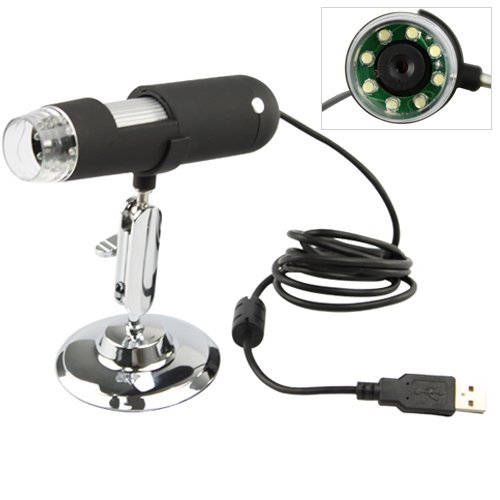The most basic type of optic microscope is the magnifying glass. It is best to know all the separate microscope parts before purchasing a microscope so that you can pick the one that is best for you.
Eyepiece Lens - This is the part of the microscope that the user in effect uses to look straight through onto the object that is being magnified. The eyepiece lens is typically the same in most microscopes except for the children's microscope when the eyepiece lens will be built in a smaller form in order to adapt a smaller viewers face proportions.
Microscope
Objective Lenses - The objective lenses are the second set of lenses in a composition microscope. There are usually a collection of strengths of objective lenses on any one given microscope. The objective lens will usually range in magnification power from 4X to 100X. When the objective lens is combined with the power of the eyepiece lens, then the magnification power is times by the number of the two lenses combined. So if your eyepiece lens is 10X in power and you combine that with your objective lens which is 100X in strength, then you will get the magnification power of 1000X.
Tube - The tube is responsible for connecting together the eyepiece lens and the objective lens. This is a very basic part of the microscope and only serves one single purpose. The functionality of this piece will usually never vary other than connecting the two lenses and occasionally it will also house some type of adjustment knob on the microscope.
Arm - The arm is responsible for supporting the tube and allowing the tube to be connected to the base of the microscope. The arm has no other function other than supporting the tube.
Stage - This is the place where you in effect place your slide onto. The stage usually has two clips on it that are used to obtain the slide to the exterior of the slide. Some microscopes have a mechanical stage which allows the user to in effect move the slide colse to using knobs instead of manually positioning the slide by hand.
Revolving Nosepiece (Turret) - This piece is used to rotate complicated objective lenses on one single microscope. This is used when you need to plump the number of magnifying power that you want to use.
Rack Stop - This part of the microscope is used to prevent the user from bringing the objective lens down to close to the slide that it breaks or damages something. This setting is set at the facility and cannot be adjusted.
Those are the most basic and coarse parts of a pocket microscope and you should take the time to check out each one before purchasing your microscope. Knowing all the parts of the microscope is a good way to figure out which one will work best for you.
Microscope Parts - What Is Inside the Microscope?See Also : Measurement Guide Cell Phone Backup canon easy share camera











